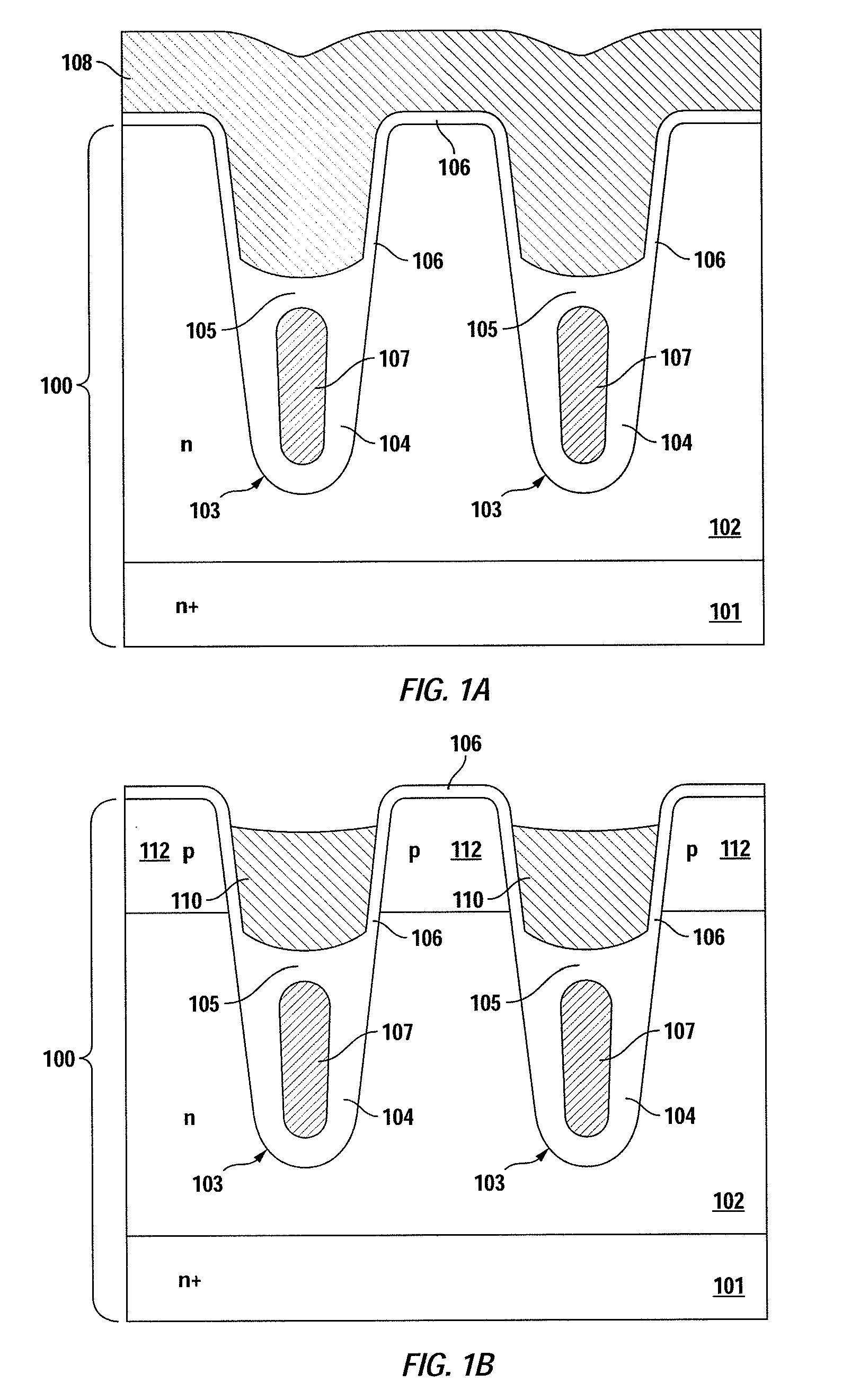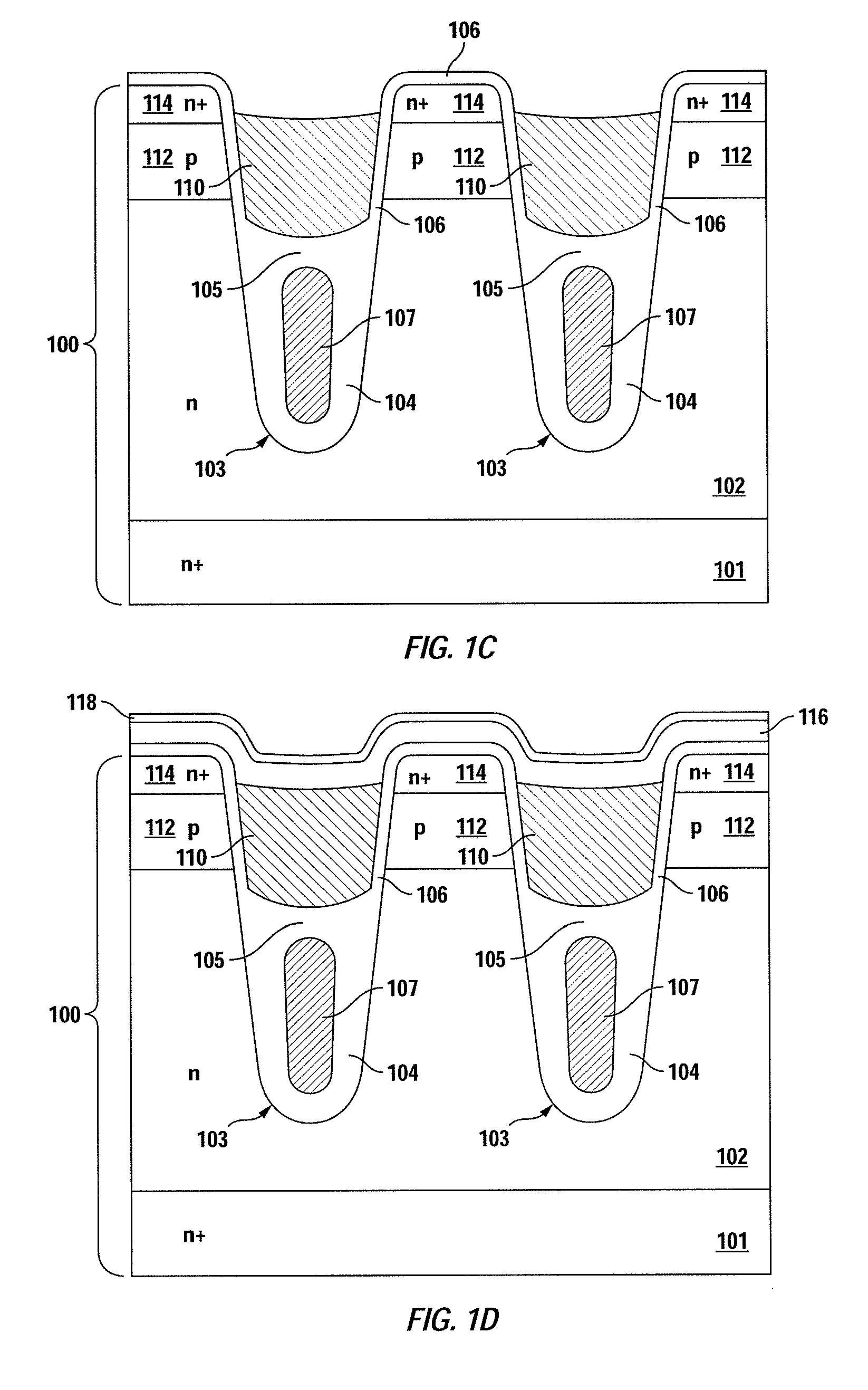Structure and Method for Forming a Salicide on the Gate Electrode of a Trench-Gate FET
a gate electrode and trench-gate technology, applied in the field of semiconductor technology, can solve the problems of increasing gate resistance, difficult to remove salicide formed on mesa surfaces, and reducing the cross-sectional area of salicide layers
- Summary
- Abstract
- Description
- Claims
- Application Information
AI Technical Summary
Benefits of technology
Problems solved by technology
Method used
Image
Examples
Embodiment Construction
[0017]In accordance with embodiments of the present invention, trench-gate FET structures with reduced gate resistance are obtained using simple manufacturing processes. Some embodiments include forming a salicide layer comprising cobalt or nickel over the gate electrode. Cobalt and nickel do not react with the silicon in silicon oxide to form stringers in the same manner as titanium, and thus spacers can be eliminated. Eliminating spacers increases the cross-sectional area of the salicide layer thus reducing gate resistance. Other embodiments include forming the source and well regions prior to salicide formation. Source and well formation require high temperature processing. Salicide layers have generally low thermal stability, and forming the salicide layer after source and well formation prevents exposure of the salicide layer to the high temperature processing. Other embodiments include forming source and well regions using thermal processes substantially without oxygen to mini...
PUM
 Login to View More
Login to View More Abstract
Description
Claims
Application Information
 Login to View More
Login to View More - R&D
- Intellectual Property
- Life Sciences
- Materials
- Tech Scout
- Unparalleled Data Quality
- Higher Quality Content
- 60% Fewer Hallucinations
Browse by: Latest US Patents, China's latest patents, Technical Efficacy Thesaurus, Application Domain, Technology Topic, Popular Technical Reports.
© 2025 PatSnap. All rights reserved.Legal|Privacy policy|Modern Slavery Act Transparency Statement|Sitemap|About US| Contact US: help@patsnap.com



